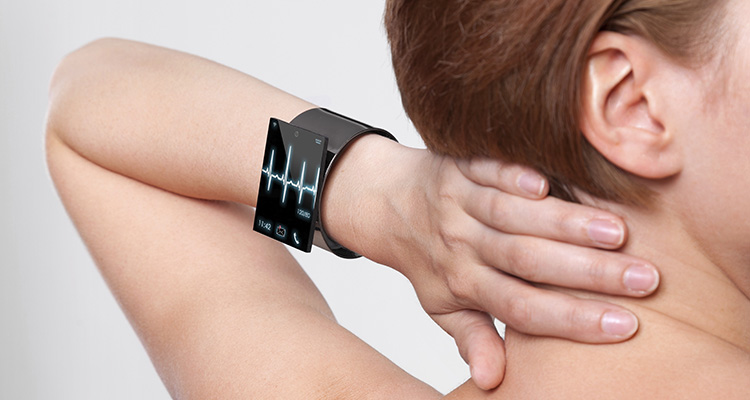Update: within an hour of posting this, the New York Times had changed the title of the article in question to “The Health Concerns in Wearable Tech”. They also deleted the tweet below. I don’t know whether other changes were made – there is no record of the post-publication edits on the page.
I was taken aback- to say the least – by an article from the New York Times that crossed my Twitter feed today that suggested wearable electronics like the new Apple Watch could be has harmful as smoking:
Could Wearable Computers Be as Harmful as Cigarettes? http://t.co/JvM1mnR2Tz
— NYT Styles (@NYTStyles) March 18, 2015
(Tweet has since been deleted)
Seriously?!
According to the article,
While there is no definitive research on the health effects of wearable computers (the Apple Watch isn’t even on store shelves yet), we can hypothesize a bit from existing research on cellphone radiation.
The most definitive and arguably unbiased results in this area come from the International Agency for Research on Cancer, a panel within the World Health Organization that consisted of 31 scientists from 14 countries.
After dissecting dozens of peer-reviewed studies on cellphone safety, the panel concluded in 2011 that cellphones were “possibly carcinogenic” and that the devices could be as harmful as certain dry-cleaning chemicals and pesticides. (Note that the group hedged its findings with the word “possibly.”)
I have to wonder whether the author actually read the International Agency for Research on Cancer (IARC) monograph on which it’s largely based – admittedly it’s a dense 400+ pages. But it is freely available, and the conclusions are pretty clear.
In an extremely comprehensive review of data associated with exposure to high frequency radiation from cell phones, the IARC panel who wrote the report found tentative evidence that very high use of cell phones might possibly lead to an increase in the relatively rare conditions glioma, and acoustic neuroma.
The precise conclusion of the panel was that
There is limited evidence in humans for the carcinogenicity of radiofrequency radiation. Positive associations have been observed between exposure to radiofrequency radiation from wireless phones and glioma, and acoustic neuroma.
(There was a minority opinion that current evidence in humans was inadequate, therefore permitting no conclusion about a causal association)
The evidence amassed suggested that incidence of glioma – a form of brain tumor which only occurs in around 3-4 out of every million people each year – might possibly increase slightly for heavy cell phone users, but the excess risk would still be around the 1 – 2 in a million for these users.
The data, however, were tentative. They also showed that, for regular cell phone users, the chances of getting this rare form of cancer actually went down – you were less at risk from developing glioma if you used your cellphone a low to reasonable amount.
The report concluded, based on one of the largest, most comprehensive studies of cell phone use and cancer,
there was no increased risk of glioma associated with having ever been a regular user of mobile phones.
As a result of their analysis, the IARC panel concluded that radiofrequency electromagnetic fields (from all sources) are possibly carcinogenic to humans (Group 2B) – based on evidence hinting that, under exceptional circumstances, cancer risks could not be ruled out.
This designation was nothing to do with the IARC panel hedging (as claimed by the New York Times), and everything to do with them following rigorous protocols on how data on potential harm (and not risk) are assessed.
Now take this back to wearable computers.
Devices like the Apple Watch are not the same as cell phones. They are generally not worn next to the head. And they don’t emit high power radio waves. At most, they emit radio frequency signals in the form of bluetooth and WiFi connections that are around a hundred times lower in intensity than the output of a cell phone.
In other words, there is exactly nothing about a wrist-based wearable that, from the IARC report, would suggest that it could cause cancer. Nothing.
Which is why the headline “Could Wearable Computers Be as Harmful as Cigarettes?” had me baffled.
Is the New York Times really comparing devices where, if anything, the data suggest wearing them could reduce the risk of getting cancer, to devices that are associated with an estimate 90% of cases of lung cancer? Surely not!
In fact the only way a wearable computer could be as harmful as a cigarette is if you set fire to it. While wearing it.
And that’s something I wouldn’t advise!
A quick update: Kaye Yandell on Twitter (@KateYandell) pointed out this excellent piece on cell phone use and brain cancer from 2011 – also on the New York Times: Do Cellphones Cause Brain Cancer?
And another update: made a coupe of very small stylistic edits that slipped through the net when getting this out.


He referenced Mercola in the article: that’s a paddlin’.
Yep – I intentionally focused on the substance of the piece, but Mercola is an “interesting” expert to draw on, to say the least
of course wearable wireless devices are carcinogenic. and they are genotoxic, neurotoxic. There is no debate any more except from those who are too afraid to face the truth or those who are paid to blog and create doubt.
While it’s on fire, you can also try to inhale as much of the burning plastic/human flesh fumes as possible to get closer to the full cigarette experience.
That’s what I was thinking 🙂 The only way I can imagine to get large quantities of harmful substances into your body fast from wearable tech!
I will be one of the first in line for the new apple watch…April 24! I will let you know how my experiment with an n of 1 turns out…cancer or not. I think not!
Living dangerously 🙂
bıttım sabunu